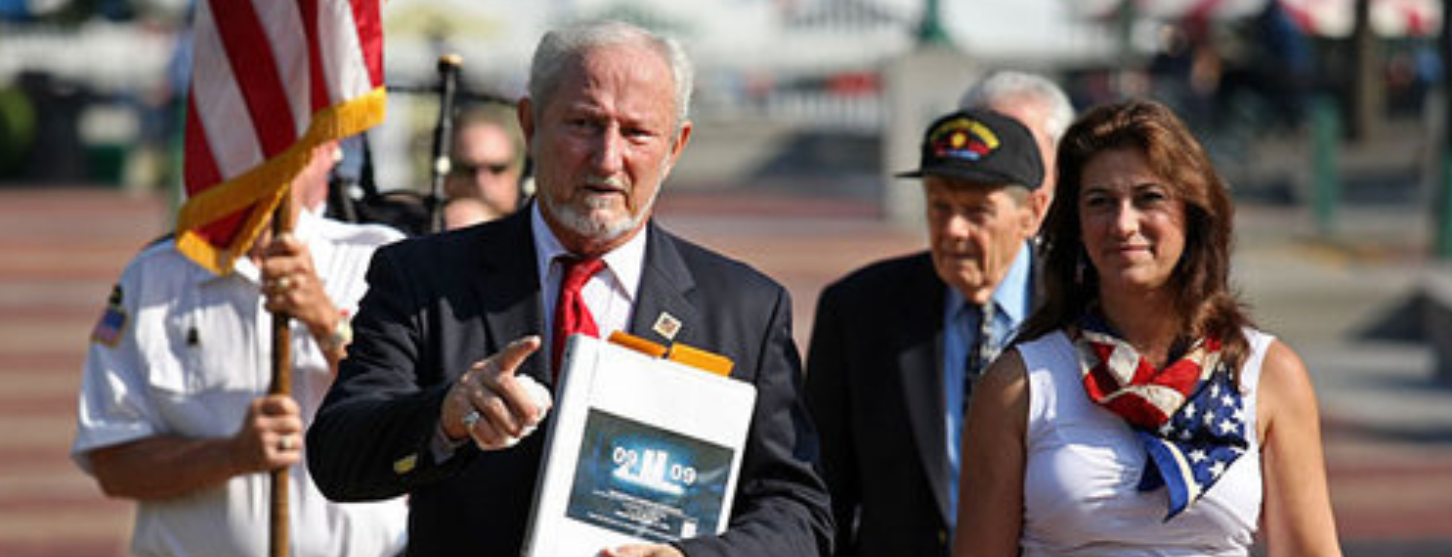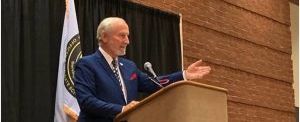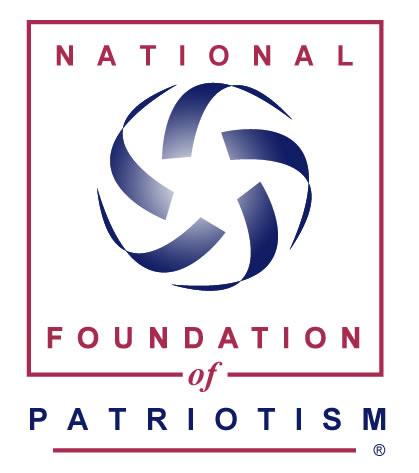Is Patriotism Still Relevant in America?
Patriotism, by its very definition, means love. Love of country, its people, its laws, its resources, its freedom.
While The National Foundation of Patriotism encourages you to find your own definition of patriotism, that’s not a bad place to begin your search.
With all the negativity the media tends to focus on, patriotism can get lost in all the noise. We can easily lose sight of all the important aspects of American life.
We see the need for Americans to have a place we can get our patriotic batteries recharged! A place to come home to the ideals, values, and historic perspective that leads the way to the future. Become familiar with our country again, check out our Symbols of America exhibit.
The National Foundation of Patriotism is a place where the seeds of patriotism can begin to take root in our hearts and in our minds. Going far beyond the word “patriotism” all the way to the meaning, the message and the mission of patriotism in America and our effectiveness and relevance on a global scale.
The Meaning of Patriotism
If the definition of patriotism is love of country, then the meaning of loving our country finds its roots in the individual hearts and personal experiences of our citizens. Begging the question: What does patriotism mean to YOU?
The National Foundation of Patriotism is dedicated to raising awareness of how patriotism has been celebrated in a broad and wide spectrum of expressions, some outrageous and wild, as you will see in our Patriotism in Entertainment exhibit; some personal and quiet in a somber setting as seen in our One America Exhibit, the story of the attacks on 9-11-01; yet others demonstrate their patriotism in decent as seen in our Medal of Honor exhibit the story of Desmond Doss. The meaning of patriotism is yours and its mine, but the most important message we would like to convey, is that its okay if we differ in what matters to us, as long as at the end of the day, we find a way to stay united on the common ground that we are all share as free Americans.
So, what does patriotism mean to YOU?
The Message of Patriotism
The message of patriotism finds its way meandering throughout history, in the many emotional expressions we see in unexpected places. The Olympics is a place to see an emotional expression of patriotic pride. How do YOU feel when you see our flag unfurl as the gold medalist from the USA takes the center stage. They won, yet we feel the victory.
Another unexpected place that patriotism showed up was on 9-11-01, when our enemies attacked believing they would destroy the very backbone of America through our economy, thus the bombing of the World Trade Center. What a surprise we gave them, when we stood together as untied Americans. We hung so many American flags, that when we ran out of flags to hang, we saw bed sheets painted red white and blue, and hung up on bombed out store windows. We saw that people painted flags on just about everything, they planted red white and blue gardens, and an entire array of patriotic food started appearing in our magazines and on internet food sites. American flag pins were our most popular item in our gift shop.
And then the donations started to roll in, for police, fire and EMS. Widows funds, college funds, and rebuilding funds of all kinds.
Patriotism healed our nation.
The beauty of the message of patriotism is that it renews and revives the spirit of America.
What is YOUR patriotic message to the world?
The Mission of Patriotism
The mission of patriotism in America is to sustain the strength of the democracy and in turn, the freedom that we love.
Patriotism is what holds us all together, gives us common ground to stand together, it’s the DNA of America.
The National Foundation of Patriotism is dedicated to helping us to regain our pride in our uniqueness as well as our sameness, while finding balance and fairness in our Founding Documents, which chronicle the ideals born out of the Judeo-Christian values we were founded upon.
What is YOUR patriotic mission?
Is patriotism still relevant in America?
You bet it is! The spirit of America relies on it to keep us strong and free.
Recent Posts
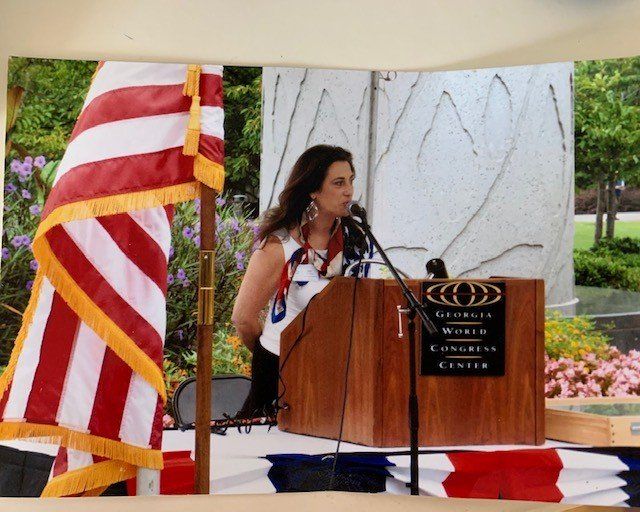
Leadership is an action, not a position. Non-profit organizations, by the very nature of the business, require passionate, dedicated leadership to develop and maintain sustainable growth. Especially when times get tough, creative leaders who are passionate about their missions, learn how to chart new courses. Aim to meet the goals of the mission in unique new ways, rather than struggle over things that no longer work. If the mission is important, then the methods for sustainability will appear through action. It is imperative for a struggling nonprofit to keep strong connections and build on relationships, especially in transition periods. On average, museums receive less than 25% of their funding from government sources, that means the rest must come from public and private sources. Many museums have closed since the downturn of 2008 and more are at risk due to Covid-19 restrictions than ever in recent history. “The scattered fate of closed museums rest in pieces in cities across America, and sadly, what is often preserved is not the identity of the museum, but the shadow of its memory in scattered objects and archived names.” Said Allison Meier, in her 2013 article for Hyperallergic, an online publication that supports the arts. Passion matters. Do people really care about the benefit of museums in their communities anymore? According to the American Alliance of Museums: · 97% of Americans believe museums are educational assets. · 89% of Americans believe museums provide economic benefits to their communities. · 96% of Americans say they would support legislative actions to help support museums. · 96% of Americans say they want to maintain or increase federal funding of museums. Museum and other nonprofit directors must find ways to keep their businesses alive through these turbulent times. Directors are people and they get weary, discouraged and overwhelmed just like the rest of us. In 2008, the National Museum of Patriotism faced crushing financial realities after the 2008 economic downturn greatly diminished the funds of its major donor base in Atlanta. Great leaders think on their feet, are flexible, they are realists and they are decision makers. Founder Nick Snider, passionate about the mission that drove him to donate his own funds in starting the organization in 1996, had a serious dilemma to face and no time to waste in dealing with it. In 2010, just one year after moving to a new location, Nick made the crucial decision to close the facility, and create an online museum. The National Foundation of Patriotism was formed and the physical exhibits were photographed, archived and later dispersed. Some were donated to other museums, good for the industry. Some were auctioned and bought by people on patriotic missions, good for America. And some were preserved for future traveling exhibits. It was a tough decision, but it was the right one at the right time. With 12,000 members in tow, Snider created a new web and social presence that grew to a fan base in 2020 of over 350,000 engaged friends. The decision cut the $100,000 monthly budget to $12,000. And the mission of the National Foundation of Patriotism has enjoyed robust growth. In an effort to support and encourage other nonprofit organizations, here is the National Foundation of Patriotism’s top 10 success strategies for nonprofit leaders. 1. Start public speaking. Sharing your vision actually strengthens and reinvigorates YOUR passion! Whenever possible, speak to people in person. You’ll feel their energy and benefit from their support. 2. Make appointments to see your donors. Meet with them, share how you are adjusting to a new strategy, let them know this is not a fundraising call, but the next one will be. Stay connected to major donors with gratitude and remind them that their donations mattered and are not lost. Be specific about how those dollars have undergirded the mission and created a sustainable product that will be launched in a new way. 3. BE HONEST. With your donors, and with yourself. YOU didn’t fail, the economy did, but you have a plan. Focus on the truth, focus on the reality that you are facing, and give yourself a little breathing room to develop a new strategy. 4. Get Social. Dive deep into online options to reach people with your mission first (what we do), the meaning second (why we do it), and your method for sustainable growth third. 5. Hire a transition team. Even if you have to fire your entire organization, you need these 3 to help keep you refreshed, resourceful, and available. a. A Web designer b. A Social Media Content Manager c. An assistant to help with details of the transition 6. Engage your volunteers. Host appreciation luncheons, and encourage them to take part in the transition. 7. Engage in projects that help or support other people and organizations. It keeps you in the right place in the public eye and opens you to a wide range of diverse new friends and supporters. 8. Invite young college students to a planning and brainstorming meeting that can generate ideas and enable them to get excited about your mission. If you FEED them, they will come! ALWAYS FEED THEM. 9. Get ruthless with your daily schedule. Start as many days as possible by what I call Breakfast with Champions. Meet with successful people and invite them to tell you all about how they reached their goals. YOU EAT, THEY TALK, YOU LISTEN! 10. Block off time each day to think. Close your door, turn off your phone, turn out the lights and just let your mind flow where ever it wants to go. Eventually, you’ll settle on what matters and then you’ll strike gold. That great idea, that winning strategy, that path to success. The National Foundation of Patriotism wishes you all the best. You matter. Your organization matters. Don’t ever give up. God bless you, and may God continue to bless America!
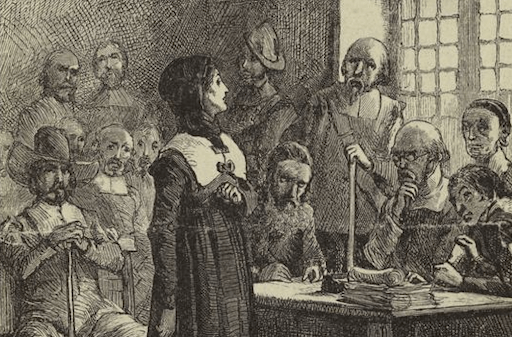
Puritan Spiritual Advisor, Religious Reformer, Midwife and mother of 11 children. A key figure in the history of religious freedom in England’s American colonies and the history of women in ministry who challenged the authority of the ministers. Anne Hutchinson was born in Alford, Lincolnshire, England, and was the daughter of Francis Marbury, an Anglican cleric and school teacher, who gave her a far superior education than that of most other girls of her day. She resided in London as a young adult, while there, she married William Hutchinson (1586- 1641), he was a judge (chief magistrate) in the Colonial era settlement at Portsmouth on the Island of Aquidneck, which is now known as Rhode Island. The couple moved back to Alford, Lincolnshire and began following preacher John Cotton. Cotton was compelled to emigrate to the New World in 1633, and the Hutchinson’s and their 11 children followed him shortly thereafter. Soon they became well established in the growing settlement of Boston in New England. Anne Hutchinson became a Midwife and was helpful to the women needing her assistance, as well as forthcoming with her personal religious understandings. She began hosting a weekly meeting in her house to deliver sermons and teaching the women about Christianity. She became so popular even men started joining her meetings, including Henry Vane, the young governor of the colony. It wasn’t long before her reformation teachings started ruffling the feathers of the male religious leaders of the day. Her strong religious convictions and intense delivery shook the established Puritan clergy to the core. Her obvious intellectual acumen, as well as her popularity and charisma, created a deep divide that threatened to destroy the Puritans’ religious community in New England. She began to accuse the local ministers (except Cotton and her husband’s brother-in-law John Wheelwright) of preaching a covenant of “works” rather than a covenant of “grace”. Many of the ministers began to complain about her increasingly blatant accusations, as well as certain unorthodox theological teachings, according to them. The grumbling eventually erupted into what is commonly called the Antinomian Controversy, culminating in her trial, conviction and banishment from the colony. Followed by a church trial, in March 1638, in which she was put out of her congregation. Tried, Convicted and Banished! She was eventually tried and convicted, then banished from the colony with many of her supporters. Hutchinson and many of her supporters established a settlement of Portsmouth with encouragement from Providence Plantations founder Roger Williams in what became the Colony of Rhode Island and Providence Plantations. After her husband’s death a few years later, in 1641, threats of Massachusetts taking over Rhode Island compelled Hutchinson to move totally outside the reach of Boston into the lands of the Dutch. Five of her older surviving children remained in New England, while she settled with her younger children near an ancient landmark, Split Rock, in what later became The Bronx in New York city. Tensions were high during the Kieft’s War with the Siwanoy Indian tribe, and in August 1643 Hutchinson, her 6 children and other members of the household were massacred by the Siwanoys. The only survivor Susanna (Hutchinson) Cole The only survivor being her nine-year-old daughter Susanna, who was taken captive. There are two accounts of her salvation, one was that she had red hair, and that spared her from slaughter, and the other is that she was picking blueberries some distance from the house and hid in the crevice at Split Rock. Either way, she was taken captive and held for several years. Sources say she had a son while in captivity to Siwanoy sachem Wampage I. Believed to be her mothers’ murderer. The child Ninham-Wampage would later become known as Wampage II. She would eventually marry John Cole in Boston on December 30, 1651. John Cole was the son of a Boston innkeeper Samuel Cole, who is credited with establishing the first tavern in 1634. Anne Hutchinson is honored by Massachusetts with a State House monument calling her a “courageous exponent of civil liberty and religious toleration” Often referred to as the “most famous – or infamous – English woman in colonial American history.


